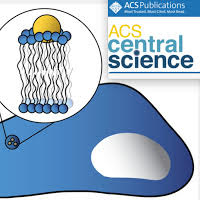
“Biological Responses to Engineered Nanomaterials: Needs for the Next Decade.”
But there is another double meaning in the publishing of this work: The flatness underlying the vision of Open Access2 is also at play in how the work was done. ELEVEN different research groups were involved in formulating the ideas and writing the paper. This lot provided tremendous breadth of expertise, but the flatness in the organizational effort allowed us to merge it all together. Of course, it wouldn’t have happened without significant leadership, and Cathy Murphy, the paper’s first author, orchestrated us all magnificently. While flatness in organizational behavior isn’t typically considered part of sustainability, in this case it provided for the efficient utilization of resources (in this case, ideas) across a broader cohort.
So what is our article about? Fifteen years into the 21st century, it is becoming increasingly clear that we need to develop new materials to solve the grand challenges that confront us in the areas of health, energy, and the environment. Nanoparticles are playing a significant role in new material development because they can provide human-scale effects with relatively small amounts of materials. The danger is that because of their special properties, the use of nanoparticles may have unintended consequences. Thus, many in the scientific community, including those of us involved in writing this article, are concerned with identifying rules for the design and fabrication of nanoparticles that will limit such negative effects, and hence make the particles sustainable by design. In our article, we propose that the solution of this grand challenge hinges on four critical needs:
- Chemically Driven Understanding of the Molecular Nature of Engineered Nanoparticles in Complex, Realistic Environments
- Real-Time Measurements of Nanomaterial Interaction with Living Cells and Organisms That Provide Chemical Information at Nanometer Length Scales To Yield Invaluable Mechanistic Insight and Improve Predictive Understanding of the Nano−Bio Interface.
- Delineation of Molecular Modes of Action for Nanomaterial Effects on Living Systems as Functions of Nanomaterial Properties
- Computation and Simulation of the Nano−Bio Interface.
- Murphy, C. Vartanian, A., Geiger, F., Hamers, R., Pedersen, J., Cui, Q., Haynes, C., Carlson, E., Hernandez, R., Klaper, R., Orr, G., & Rosenzweig, Z. Biological Responses to Engineered Nanomaterials: Needs for the Next Decade. ACS Central Science, 2015, article ASAP. doi: 10.1021/acscentsci.5b00182 (open access)
- Pedersen, J. & Geiger, F. How Open is Open Access? Journal of Physical Chemistry Letters, 2015, 6(7), 1246–1248. doi: 10.1021/acs.jpclett.5b00381 (read full text here)
